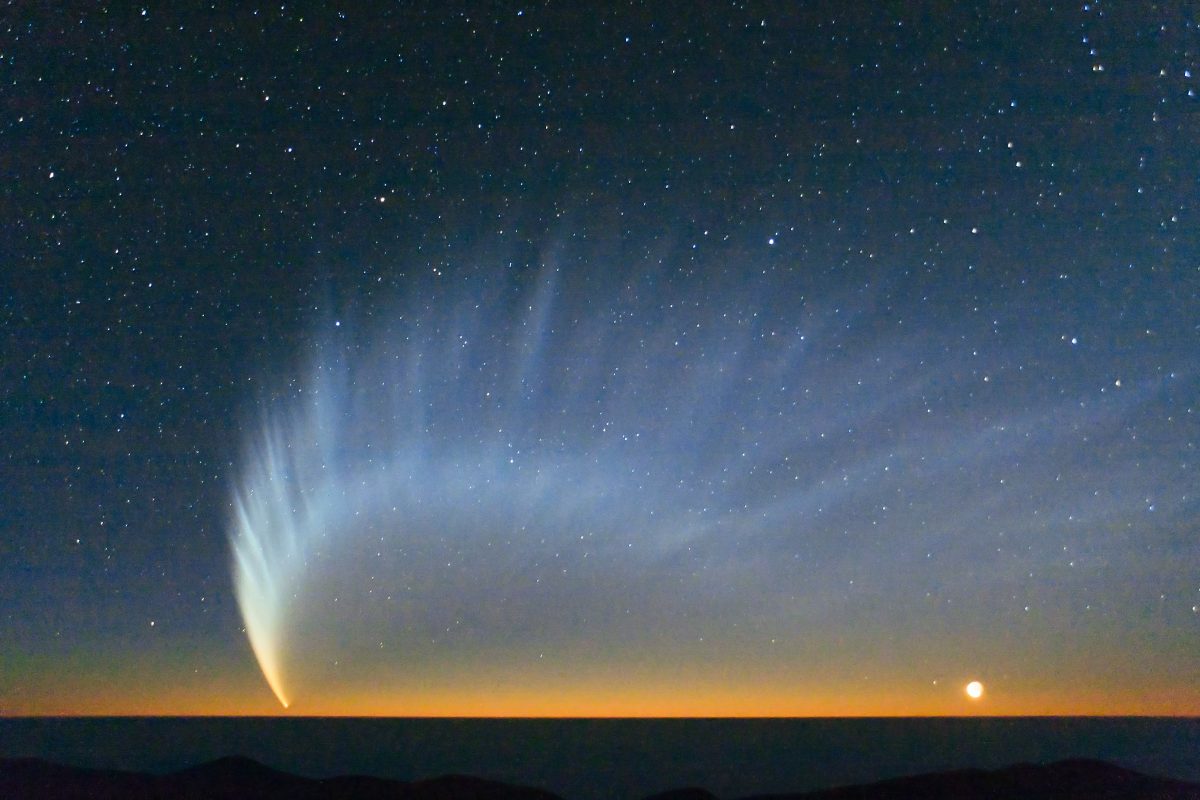The Sun's Magnetic Influence Helps Shape a Comet's Tail
Posted on Categories Discover Magazine

It turns out that the sun’s magnetic field can shape and push the dust of a comet’s tail, according to a revelation made possible by one young scientist’s innovative new image-processing technique.
Comet Dust
In 2007, scientists were elated when NASA’s STEREO spacecraft laid its “eyes” on Comet C/2006 P1, also known as Comet McNaught — named after astronomer Robert McNaught, who discovered the comet a year prior. Comet McNaught, which is part of a group called “the Great Comets,” was one of the brightest comets visible from Earth within the past 50 years. And scientists were lucky because, when STEREO, made up of twin satellites, was turned on, Comet McNaught passed right in front of it, creating a wealth of incredible data and images.
Scientists found that the comet’s structured tail had distinct bands of dust stretching over 100 million miles behind it. But how exactly this tail was broken up and structured in this way remained a bit of a mystery. But Oliver Price, a planetary science Ph.D. student at University College London’s Mullard Space Science Laboratory in the United Kingdom, has developed a new image-processing technique that revealed incredible new details about the comet.
An Advanced Technique
With this new technique, Price was able to reveal incredible new information from the Comet McNaught data. Price was able to better show how dust behaves in a comet’s tail — how it breaks apart and clumps up. “When we observed McNaught, there was a lot of great data, but we had to find a way to put it all together in a usable format,” Price said in an email. “The comet dust comes from the nucleus, which is tens of miles wide, and spreads out to form a tail that is millions of miles wide, so it can be really hard to keep track of things! Our technique shows the data together from all the sources according to the most basic properties of the dust – the size of the dust, and when it was released from the nucleus. This lets can see exactly how each dust feature is changing.”
With this new technique, Price was able to see how the sun’s magnetic field can have a profound impact on the dust’s behavior. Understanding the behavior of this dust could inform similar behaviors and processes in asteroids, moons, and even planets in the early solar system, according to a statement.
“It’s been known for a long time that sunlight powers the dust tail – light hitting each dust particle pushes them out into the solar system,” Price said. “This result shows that the magnetic field of the sun can also affect the motion of dust and the shape of the dust tail. When the solar system was forming, it was basically one massive dust cloud, a bit like a comet tail. This means we have something else to think about when we consider how the dust in the early solar system was behaving.”
This new work is published in the journal Icarus.